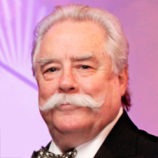While running through my 500 cable channels, I stopped on the Discovery Channel or the Science Channel or the Learning Channel or another channel that attempts to intrigue the viewer with oblique subjects in which we would normally have little interest.
Before I had time to change my mind, the perky-upbeat-oddball-science-geek host bounced around excitedly trying his hardest to involve the onlooker in this week’s program. Having imbibed several after-dinner nightcaps and having dropped the station flipper off the end of the couch, I decided to see why this guy was so wound up.
Water! This show’s host was researching water. Last week it was dirt or salt or feathers or some such nonsense and this week he was animated about water.
OK, what the heck, I occasionally drink water at the gym, bathe in it on Saturday night, shave with it and because I had already seen the reruns of I Love Lucy, I leaned back and dared him to tell me something interesting about water. “Take your best shot, buddy; tell me all about water. I’ll give you five minutes, but if you are not absolutely fascinating you’re out of here and I’m turning on The Simpsons.”
The host tells us important facts. “Water is the chemical substance with the formula H2O; one molecule of water has two hydrogen atoms covalently bonded to a single oxygen atom. Water appears in nature in all three common states of matter—solid, liquid and gas—and may take many different forms: water vapor, clouds, seawater, icebergs, glaciers, fresh and saltwater lakes, rivers and aquifers.”
“Yeah, yeah, get on with it. The Simpsons are looking pretty good and as soon as I find the remote you’re only a finger click away from being replaced.”
“Did you know there is a research laboratory that makes pure water?”
“No, I didn’t.” I answered the TV.
“Yep, there is a place that makes water out of chemicals. Water is basic and if you have two parts hydrogen and one part oxygen and you have a place to stir them up and glue them together you can make water that is absolutely unpolluted. This place makes untainted water for scientific experiments and for outer space tests where there can be no contaminates. If you want unadulterated water you can get it. However, it will have no taste and they don’t even think it is very good for you to drink a lot of it.”
The show’s host is brave and drinks some.
“How does it taste?” The white lab-coated water maker asks.
“It tastes like nothing. It has no flavor what-so-ever.”
“That’s because pure water is just chemicals and the taste of water comes from the minerals that it filters through.”
That makes sense, I guess. If water filters through a peat bog it will have a tang of peat. Glenlivet Scotch has tasted the same for three hundred years because of the water seeping down through peat bogs. Jack Daniels bourbon has been taking its water from the same place for one hundred years and if it didn’t it would probably taste like Jim Beam. Coors beer makes a big deal out of their water.
With my demented historical memory, if I had been writing the show’s dialog I would have added the fact that during the Civil War troops on both sides preferred the taste of their coffee if the water was drawn upstream from the latrine. If the cook set up shop downstream from the latrine coffee had a tangy acrid bouquet and left the biting aftertaste of yesterday’s soup.
Enough about water. I hit the remote, looked for The Simpsons but found instead an old Perry Mason episode. Great! I love Perry Mason. With another Glenlivet or two I watched Perry solve “The Case of the Mysterious Demented Perverted Wino” and fell asleep dreaming about uncorrupted water.
Rarely does last night’s TV concern me on the morning after. But the concept of pure water and the fact that it doesn’t have a flavor stuck in my mind. Having been involved with motorcycles my entire life everything seems to relate to them in one way or another.
Consequently, I decided a motorcycle can be pure. All it needs are two wheels, an engine, somewhere to sit and you have pure uninteresting equipment with no individuality or contaminants. When inventors add their ideas to make this unpolluted apparatus better or different, it is those manufacturers’ options that give the motorcycle personality and changes its essence. Bikes, like water from Tennessee taste like Jack Daniels; some people like Coors and Hondas, others like Guinness Stout and Triumphs, many from Wisconsin like their Lake Michigan water and their contraptions filtered through Milwaukee and Harley-Davidson.
When we spend our money we tell the manufacturer about our tastes and how we appreciate their ideas that filter down through the factory. This sorting out and leaching of ideas does not stop when the motorcycle is purchased. A machine starts out unsullied but everyone who attaches a fingerprint adds something to change its essence. It is just like a stream that adds zest and spice to itself as it trickles down the side of a mountain picking up minerals, rocks, sticks and oozing through dirt. A motorcycle cannot remain unaffected or unaltered by every mile it flows over the highway.
That is a good thing. After all, only a scientist cares about things antiseptic and sterilized and there is certainly nothing pure about a motorcycle.
Stand in front of a bar in Van Horn, Texas, and look at the bikes. Take a mental picture. Go inside and have a Lone Star Beer. Now hold that memory.
Stand in front of a bar in Mexico City and look at the bikes. Take a mental picture. Go inside and have a Corona. Now hold that memory.
Because the machines and the beer have different histories and come from different sources, they have individual seasoning. Nothing with flavor is pure. You can like it or not… there is no accounting for taste. However, most of us like the water for our coffee drawn from the creek upstream of the latrine.




















